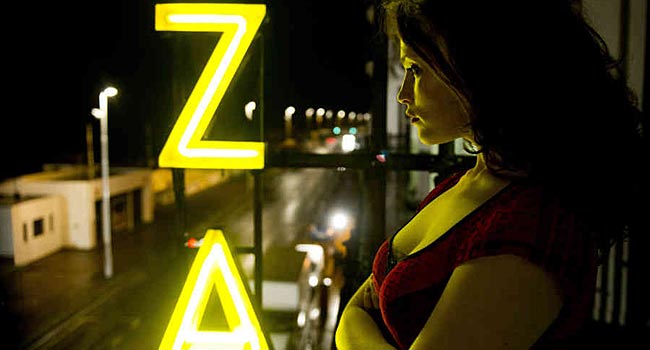
Stylish, beautifully shot, violent, gothic, romantic—Byzantium is vampire lore done right.

Stylish, beautifully shot, violent, gothic, romantic—Byzantium is vampire lore done right.
Since the advent of color in film, gushing red stuff has been one of cinema’s most enduring images—the sight of blood seldom fails to trigger something in us. Blood can be spectacular (Kill Bill), repulsive (Evil Dead), or erotic (pretty much every vampire movie ever). In Byzantium, Neil Jordan’s latest, particularly sullen take on the vamp-flick, blood represents the penance, anguish, shame, and suffering inherent in the immortal curse, much like the great Let the Right One In (though much flashier and sans the snow). Stylish, beautifully shot, violent, gothic, romantic—Byzantium is vampire lore done right, though it has its hiccups. It gets too caught up in its own mythology at times and the storytelling gets a little cluttered near the end, but ultimately it’s an engrossing modern vampire tale that’s elevated by a killer cast and stunning visuals.
The film notably resembles Jordan’s biggest feather in his directorial cap, Interview with the Vampire, though it exchanges super-hunks Tom Cruise and Brad Pitt for a pair of equally (if not more) fascinating lady-vamps, a mother and daughter duo. Gemma Arterton plays the viciously protective and predatory mother of teenager Saoirse Ronan, a gentler, more conscientious soul. Arterton hunts her mortal prey with cunning and frightening precision, while Ronan chooses to only feed on the willing, an apologetic death-bringer of sorts. Forced to live as vagabonds, darting from city to city to protect their immortal identity (much to the frustration of ever-teen Ronan), their newest stop-off is a tranquil coastal town where Arterton seduces her way into securing them a place to stay—an out-of-service hotel called Byzantium (which she converts into a brothel, an environment we later learn she’s all too familiar with.)

Ronan meets Caleb Landry Jones, a sweet, endearingly shy yet persistent admirer, who’s determined to break Ronan’s shell. Jones is captivating, a scraggly and unkempt fellow with long, tangled red locks that tumble where they may (he’s the polar opposite of the super-symmetrical sex-bros of Twilight.) Jones and Ronan play off one another so well it’s impossible not to get caught up in their every glance, every subtle gesture. We yearn for them to be together just as they yearn. The youngsters’ tug-o-war courtship is the film’s everything—without it, the Byzantium would amount to nothing more than a good looking plot machine.
There are no fangs to be found here—instead, Byzantium’s vampires have thumbnails that extend into razor-sharp talons. This major alteration to the vampire anatomy, while potentially offensive to purists, actually works for me, as it allows the actors to convey their characters’ personalities physically, and quite articulately. While Ronan gently pops open her volunteers’ wrists like a soda can and sips, Arterton gives her victims repeated, brutal “thumbs-ups” to the jugular and guzzles. Speaking of Mrs. Arterton, I’ve not seen her any better—she oozes with so much carnality and sexual dominance it’s intimidating. Ronan is equally riveting, doing the same existential brooding Kristen Stewart is endlessly criticized for, but making it look utterly mesmerizing (her arctic blue eyes speak her sorrow.)
At about the film’s halfway mark, we begin fleshing out the mother/daughter backstory with intrusive flashbacks. These scenes feel more like pesky interruptions than anything, halting the momentum of the wonderful Ronan/Jones romance incessantly. What’s worse, the mythology detailed is of no interest whatsoever, a generic gothic fairy tale with an uninspired feminist twist. The anti-climactic final “action” sequence is rudimentary and predictable (it thinks it’s pulling a swerve while we’re easily three steps ahead), and upon reflection, the film feels more like an episode than a self-contained movie (sequels are inevitable.) Despite all this, what resonates most about Byzantium aren’t its flaws, but its truly remarkable strengths—the themes of identity and trust; the richly textured, alluring imagery; the brilliantly acted relationships. Most interestingly, it’s what’s absent from this vampire tale—fangs, stakes, garlic, crosses, coffins, holy water—that afford Jordan and company enough breathing room to weave such an intoxicating and (ironically) humanistic yarn.